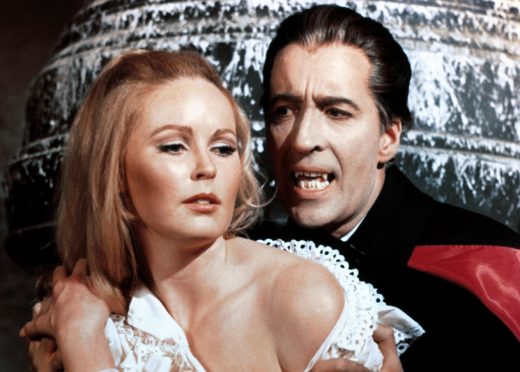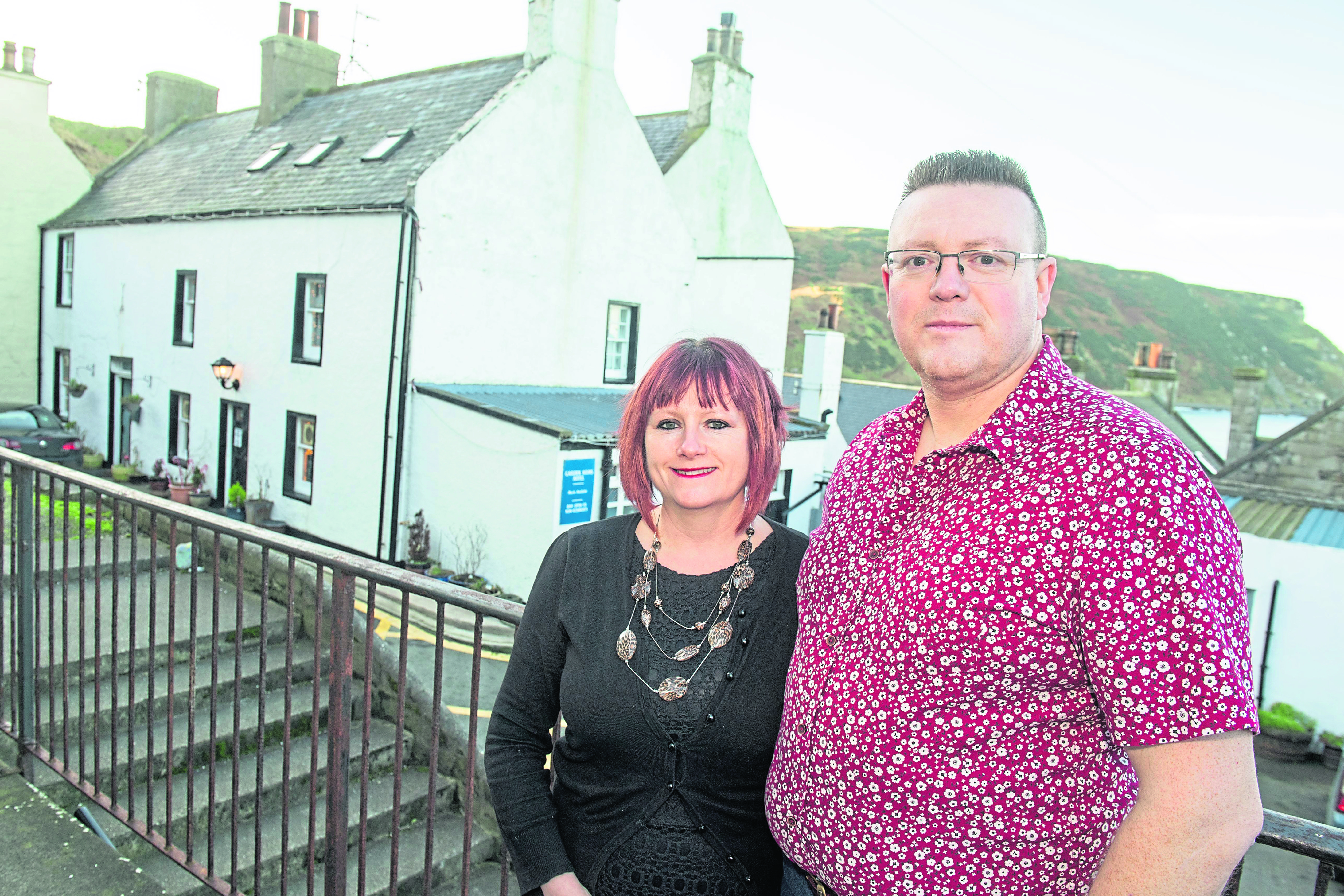
He has terrified generations of readers, curdled the blood of cinema-goers and will soon be bringing the world’s most sinister smile back to the small-screen.
Now a village in Aberdeenshire is hoping Dracula will lead an influx of tourists to the place that helped inspire the classic vampire novel’s creator Bram Stoker.
The writer stayed at the 276-year-old Garden Arms Hotel in Gardenstown, in 1896, in the run up to Dracula’s publication. It is thought he may have put the finishing touches to his most famous book there. He also based part of another lesser-known work – The Mystery of the Sea – in the village.
Now – to coincide with the launch of the TV series and on the back of feverish worldwide interest in Stoker – the pub’s owners Derek and Lorraine Toal are applying for a Historic Environment Scotland commemorative plaque to be erected at the pub. And they want to see the launch of the first official Dracula Tourist Trail in the area to mark his special relationship with it.
The tourism drive is being supported by Stoker’s own descendant, his great-grand-nephew, author and filmmaker Dacre Stoker, and north-east historian, writer and Bram Stoker expert Mike Shepherd.
Speaking from his home in south Carolina, where he manages the Bram Stoker Estate, Dacre told The Sunday Post: “Bram mentioned the hotel in Gardentown [sic] in his novel The Mystery of the Sea.
“I visited this lovely hotel myself with historian Mike Shepherd and his wife. There is no doubt in my mind this was the Garden Arms Hotel in Gardenstown. There is a very good chance that a few pages of his famous novel were written there.”
Garden Arms landlady Lorraine, 52, said: “The Dracula connection to Gardenstown came up through Mike. We have copies of documents that show Bram Stoker’s boss, Sir Henry Irving, sent letters to him here in July 1896, 10 months before Dracula was published.
“Bram Stoker loved it so much here he set part of The Mystery of the Sea in Gardenstown. We know, too, from newspaper archives that he got involved with local communities while he was in the north-east. The Peterhead Sentinel & General Advertiser for Buchan District reported his involvement in the local Horticultural Society’s flower show.
“We feel Gardenstown is a missed part of his history and a lot of the community here would agree. When Bram Stoker’s great-grand-nephew Dacre visited from America earlier this year to give a talk the place was packed with local people.
“With the new TV series launching on New Year’s Day and so much interest in Bram Stoker, we want to see the part this village played in his work recognised.”
Bram Stoker – who died in 1912 – holidayed often in Aberdeenshire, basing himself in Cruden Bay. A plaque commemorating his stays at the Kilmarnock Arms was unveiled earlier this year by Dacre Stoker.
He said: “I am sure Bram loved the quaint character and beauty of Gardenstown. It was his habit to use real places, real people, and real events in his fictional stories.”
Historian Mike Shepherd, who penned When Brave Men Shudder: The Scottish Origins of Dracula, said: “Bram Stoker stayed at the Garden Arms Hotel on July 24, 1896 when he was writing Dracula. He was on his monthly holiday from his job as the business manager of the Lyceum Theatre in London.”
VisitAberdeenshire CEO Chris Foy said: “The idea of a Dracula and Bram Stoker trail sounds like a novel way to celebrate one of the greatest gothic horror stories ever written, with its roots right here in Aberdeenshire.”

Enjoy the convenience of having The Sunday Post delivered as a digital ePaper straight to your smartphone, tablet or computer.
Subscribe for only £5.49 a month and enjoy all the benefits of the printed paper as a digital replica.
Subscribe © Abermedia / Michal Wachucik
© Abermedia / Michal Wachucik